Eight poisonous mushrooms to avoid when foraging in Denmark
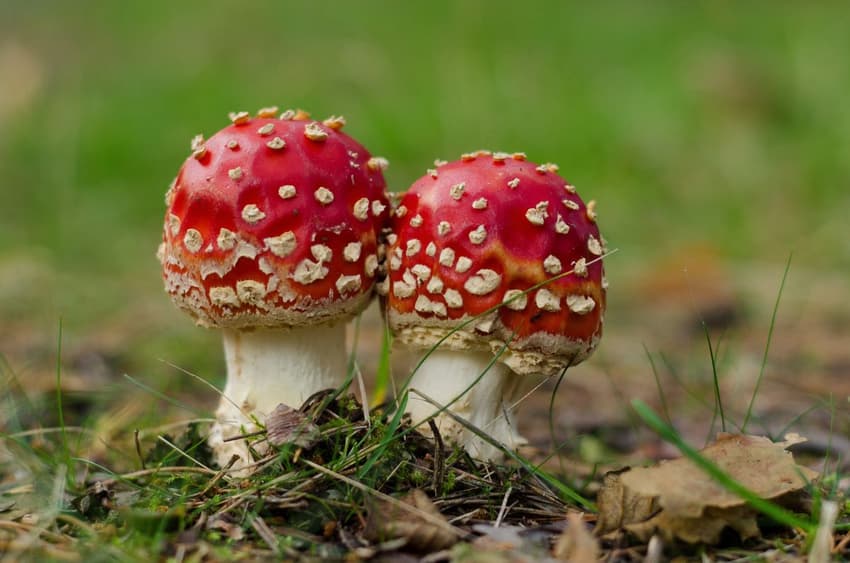
With a bumper mushroom-picking season expected this year, many foreigners in Denmark might be tempted to try their hand at foraging. Here's our list of the fungi to fear.
If you are worried you or a child have eaten a poisonous mushroom, you can ring the poison information helpline on 82 12 12 12, which is operated by Bispebjerg Hospital in Copenhagen, but covers the whole of Denmark.
The hospital also issues a useful brochure in English on the five most poisonous mushrooms you might find in Denmark.
READ ALSO:
Here's a list of some of the mushrooms you should avoid, starting with the four species that might actually kill you.
The Killers
The Death Cap (Grøn fluesvamp)
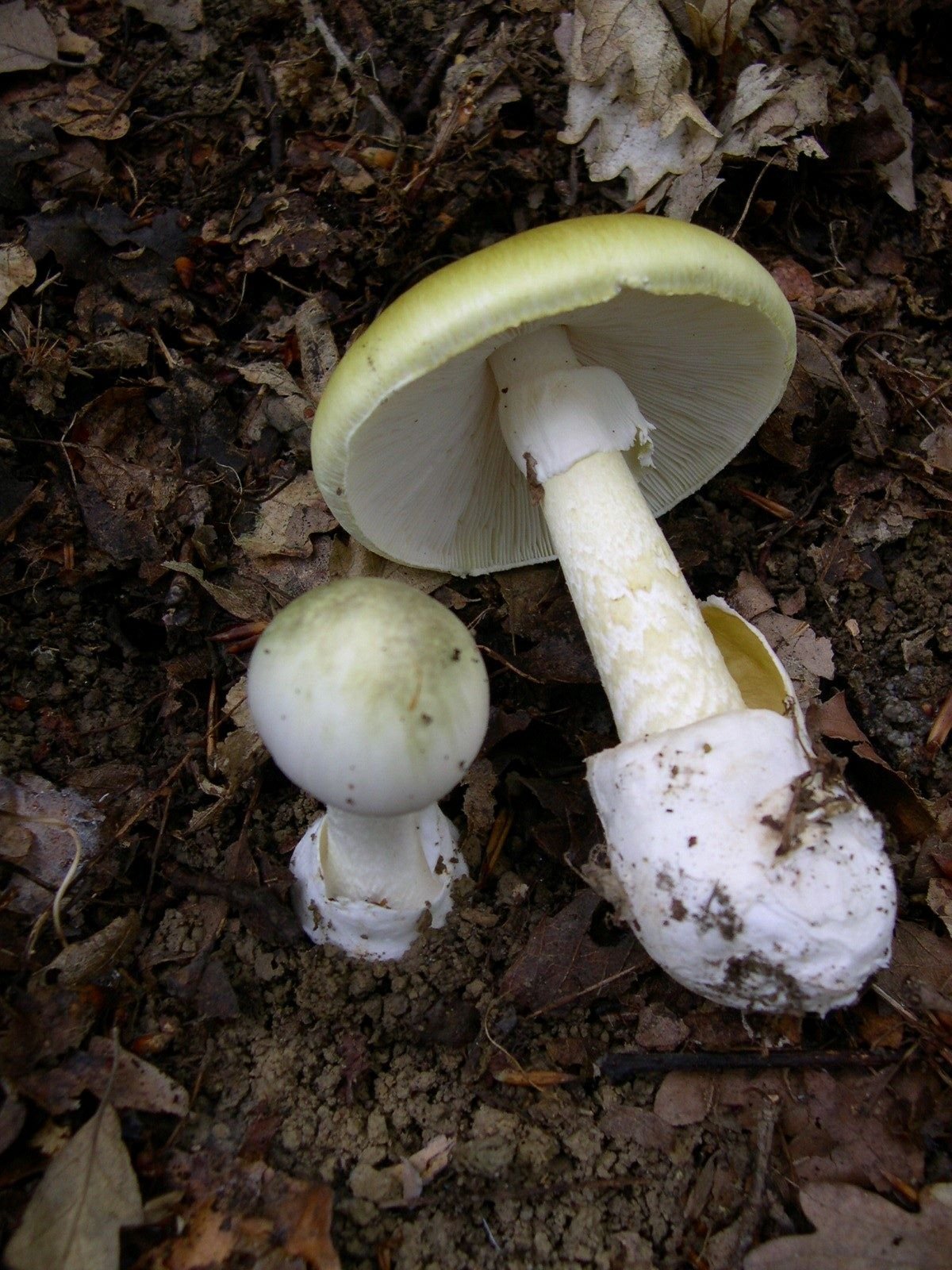
The Death Cap deserves its name. Photo: Archenzo/Wikimedia Commons
Unlike the more obviously dangerous members of the Amanita family, such as the bright red and spotty Fly Agaric (see main pic), the Death Cap, or grøn fluesvamp, looks relatively innocuous. Don't let this fool you: it is one of the deadliest mushrooms in the world.
A giveaway is its strong ammonia-like, chemical odour. It tends to have a slightly sticky cap, which is about 15 centimetres wide, and sometimes a green or yellow tint.
Finally, it has crowded, completely white gills, so beginners can avoid eating one by following the simple rule of never picking or eating anything with white gills (although this does mean missing out on some tasty mushrooms).
Death caps can be confused with the Paddy Straw mushroom, or halmslidskivling (Volvariella volvacea) which are popular in Thailand, and as a result with Thai immigrants. The Paddy Straw doesn't grow in Denmark.
When young, it has an almost completely spherical, bowl-shaped cap, which means it can be confused with puffball mushrooms or røyksopp. If you think you have found a puffball, cut it in two. If it is solid inside, with no sign of a developing cap or gills, you can eat it.
If they have a green-tinted cap, they can be confused with the Green Brittlegill or Grønnkremle (Russula aeruginea), but the Green Brittlegill never has a ring around the stem, whereas Death Caps do. Also Green Brittlegills grow mostly under birch, whereas death caps grow under beech, oak, hazel, or on meadows.
The death in the name comes from the poison amatoxin, which damages or kills cells in the liver, kidneys, and heart, and in the lining of the gastrointestinal tract. The first symptoms – severe abdominal pain, vomiting, diarrhoea, thirst and decreased urine – start between four and 48 hours after ingestion, with liver failure and, sometimes, death coming not long afterwards.
Thankfully, though, this happens rarely, with the mushroom only causing a handful of fatalities a year in the whole of Europe and Russia, with an only slightly greater number of people having to have liver transplants.
According to the Swedish Poisons Information Centre, if you have eaten less than a sugar cube's worth, you probably do not need to go to hospital. Any more that that and you should.
The Destroying Angel (Hvid fluesvamp)
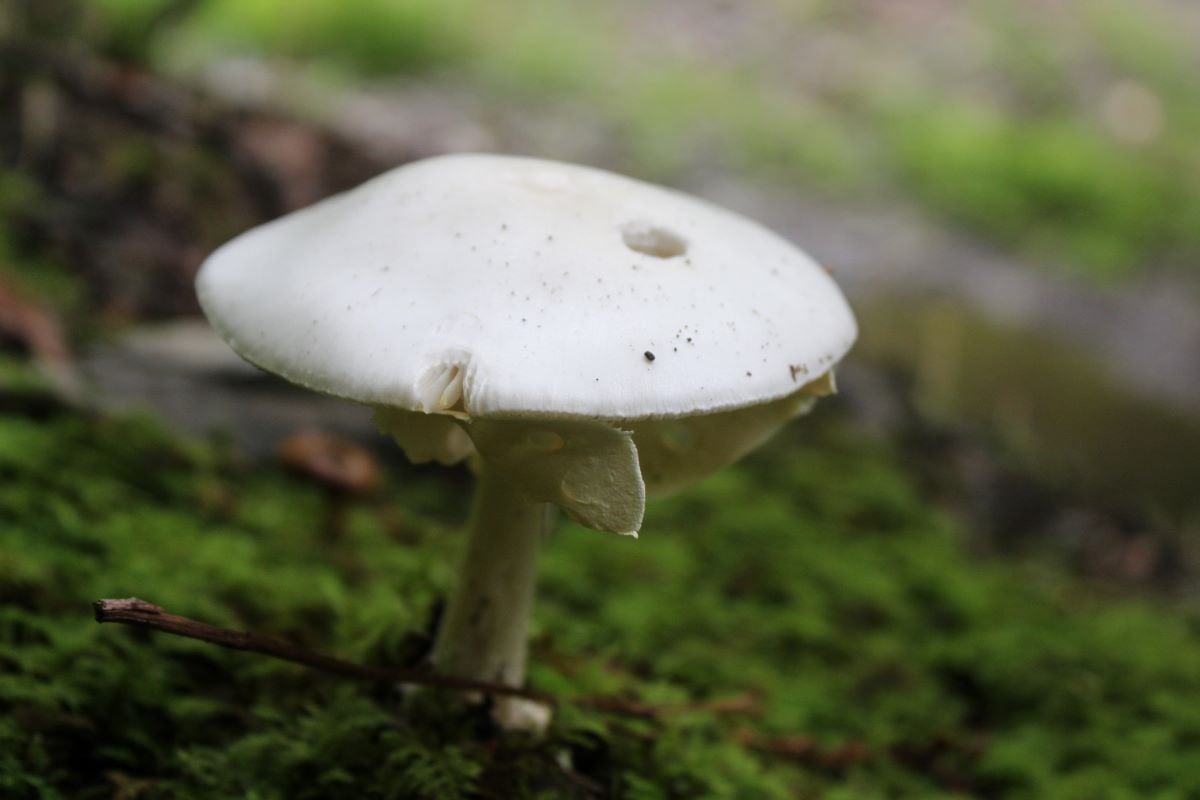
Photo by Ryan Hersha on Unsplash
The Destroying Angel, or Hvid fluesvamp, also contains amatoxin and is every bit as deadly as the Death Cap.
As its cap is completely white, and doesn't have a green or yellow tint, it is harder to confuse with brittlegiills, but it can be confused with the Horse Mushroom (Ager-Champignon), the Dove-coloured Tricholoma (Silke-Ridderhat), or the St George's Mushroom (Vårmusseron).
Horse Mushrooms, however, have pink or brown gills, whereas the Destroying Angel's are completely white, and also, unlike the Angel, Horse Mushrooms have no cup-like structure (volva) at their base.
Similarly, Dove-coloured tricholomas and St George Mushrooms do not have a ring around the stem or a sack around the base.
As with the Death Cap, a sugar cube's worth is survivable, more than that, less so.
The Funeral Bell (Randbæltet hjelmhat)
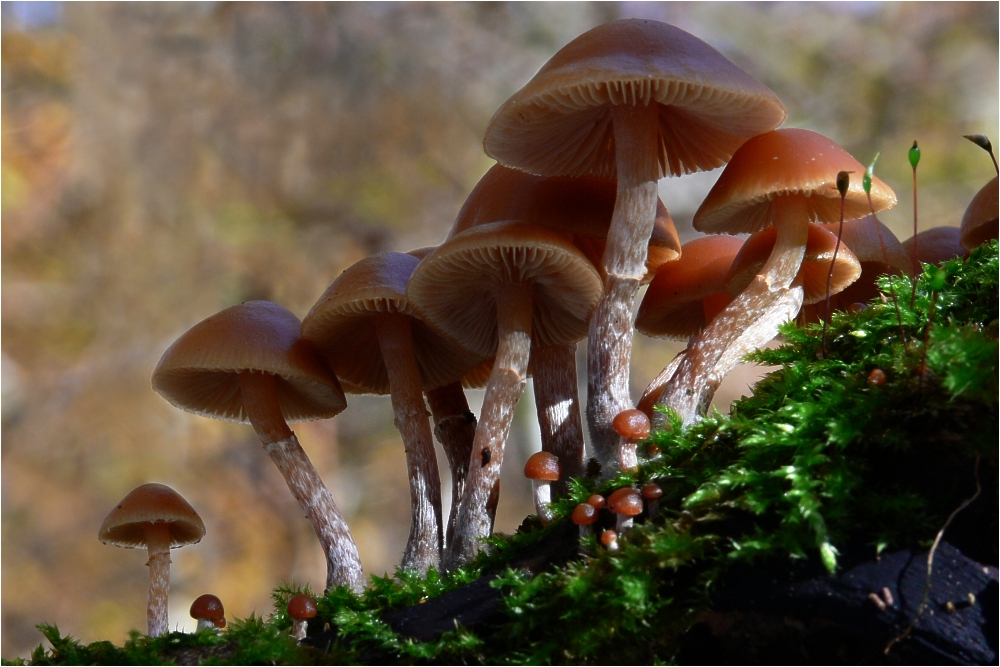
The funeral bell is, as the name suggests, pretty deadly. Photo: Lebrac/Wikimedia Commons
The Funeral Bell contains slightly lower concentrations of poisonous amatoxins than the Death Cap and Destroying Angel, but serving your guests a mushroom stew made from a batch is still quite likely to leave at least some of them dead.
It's also more common in Norway and can be confused with the edible Sheathed Woodtuft, or Foranderlig Skælhat, which is usually larger, has protruding scales on its foot, and grows in clusters on the stumps of various deciduous trees.
The British forager John Wright, in his excellent River Cottage Handbook on mushrooms, recommends staying on the safe side by avoiding both. "The rule that little brown mushrooms should be avoided is a good one," he writes.
The Deadly Webcap (Puklet gift-slørhat)
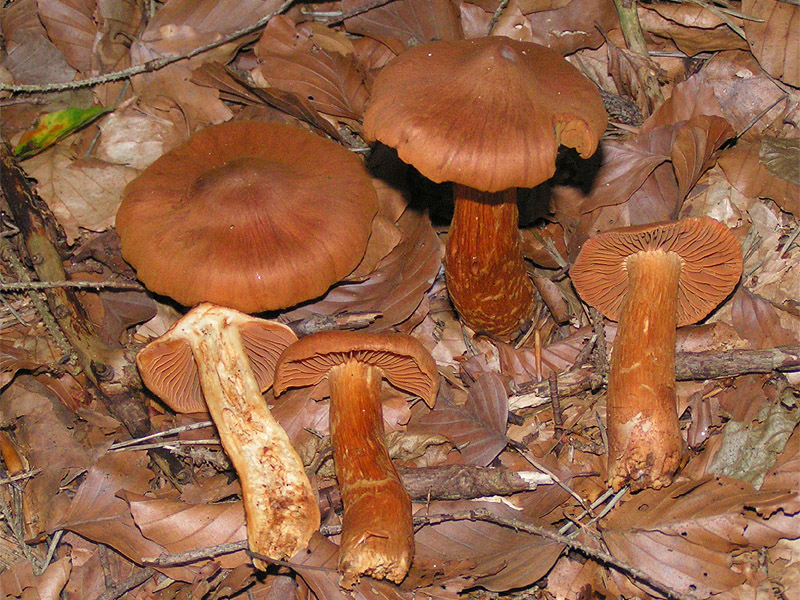
The Deadly Webcap. Photo: Eric Steinert/Wikimedia Commons
Some people pick this common and really rather dangerous mushroom believing them to be Funnel Chanterelles or Tragt-kantareler. But they are so different that doing so requires utter carelessness.
The thing that makes falling foul of this mushroom particularly cruel is the length of time it takes for symptoms to appear: up to seventeen days, according to the River Cottage Handbook (although they can appear in two). Those affected suffer vomiting, diarrhoea and shivering, followed by kidney failure and most likely death (or if they're lucky, kidney transplants).
The related and similarly deadly Fool's Webcap, or Hvælvet gift-slørhat, is very rare in Denmark. It looks similar, but lacks an orange zigzag line around the stem.
The best way to avoid mistakenly eating either of them is to stick to the aforementioned rule of avoiding all little brown (or indeed orangey brown) mushrooms with brown gills.
Easy mistakes that might make you a bit ill
The Brown Roll-rim (Almindelig netbladhat)
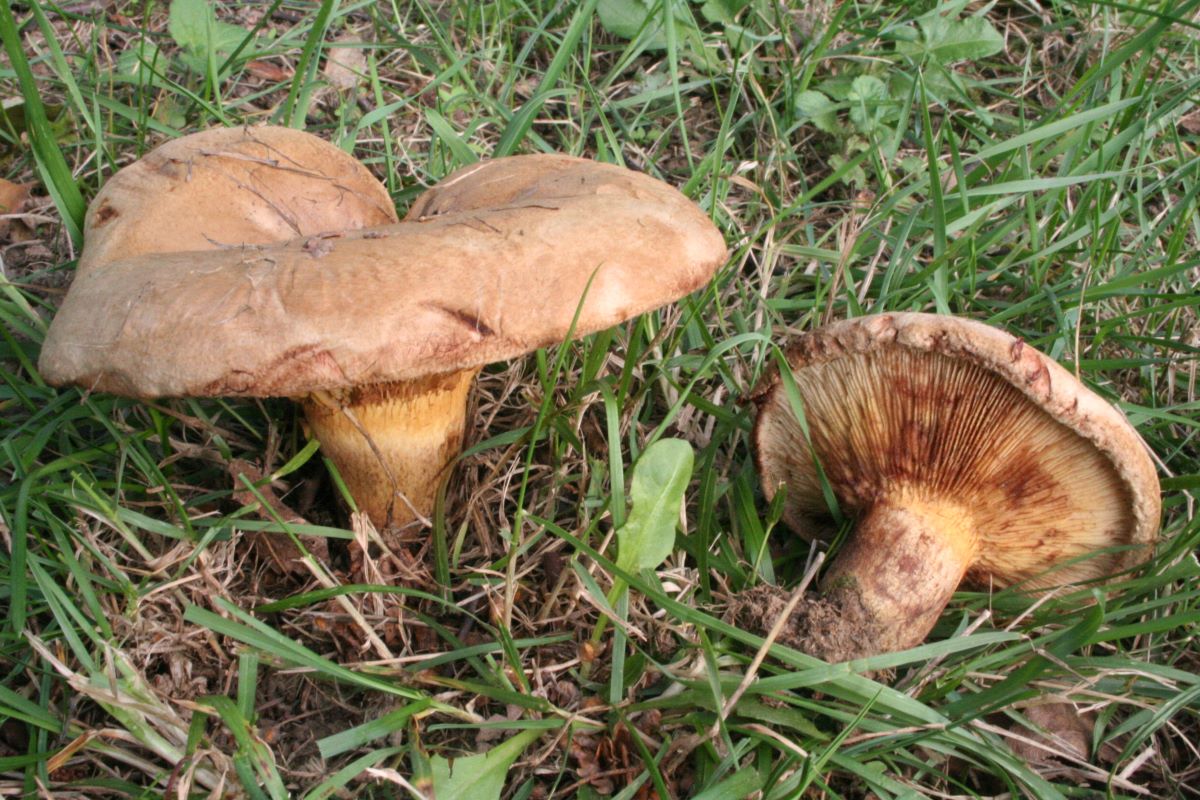
The Brown Roll-rim. Photo: Strobilomyces/Wikimedia Commons
The Brown Roll-rim is perhaps the poisonous mushroom that is most commonly eaten in Denmark, with some believing it to be edible so long as it is parboiled before cooking with the water then thrown away.
According to John Wright, it is indeed true that parboiling removes a toxin which causes short-term gastrointestinal upset. Unfortunately though, repeatedly eating them even when parboiled can cause the body to develop a severe allergy called "Paxillus syndrome" that involves a "catastrophic large-scale destruction of red blood cells". This is why the mushroom is the third most-common cause of fungal poisoning in Poland.
Some people confuse it with the Rufous Milkcap or Rødbrun Mælkehat, which you can recognise by the little wart-like bump in the centre of the cap.
The Sickener (Stor gift-skørhat)
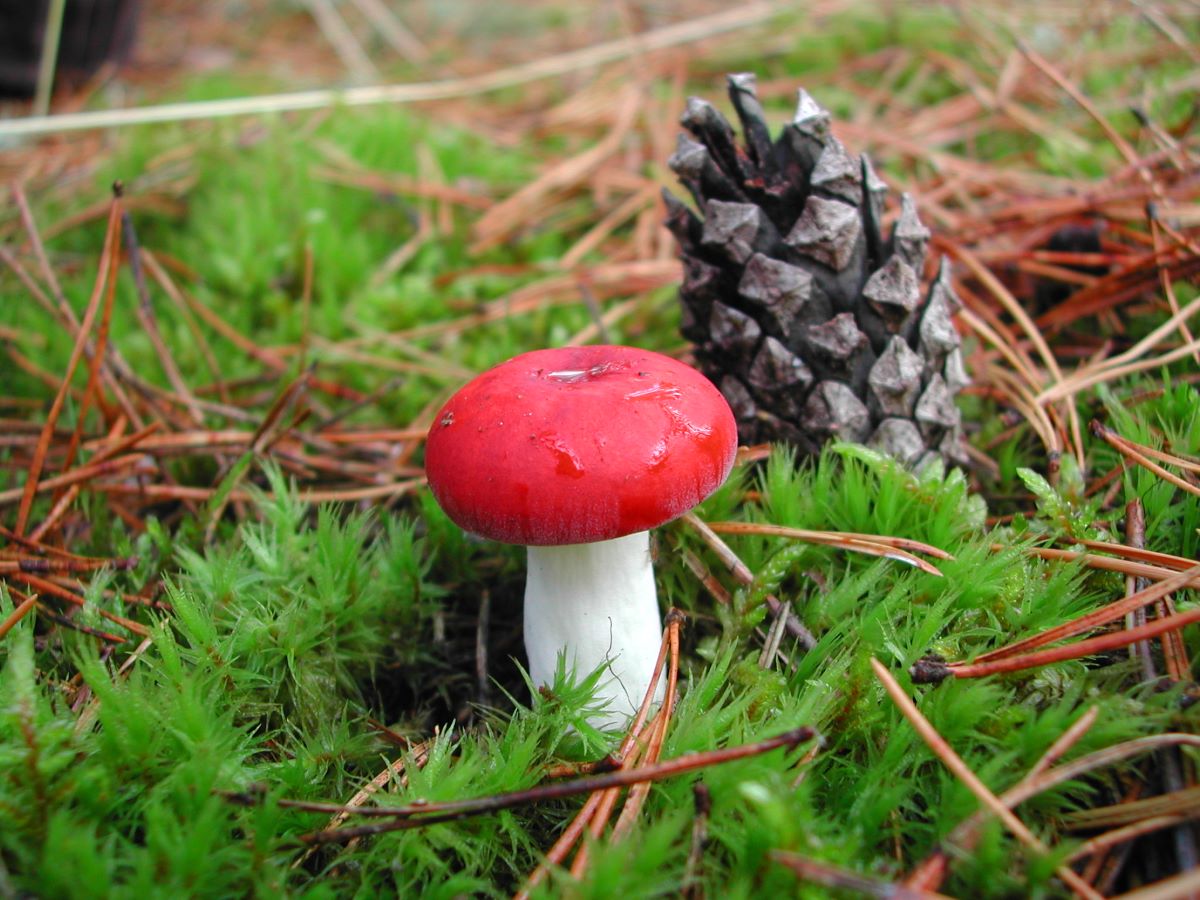
The Sickener. Photo: Piotr J/Wikimedia Commons
Brittlegills, with their (yes) brittle white gills and stems that break with a snap, are easy to identify once you know how, and have the advantage that none of them will make you seriously ill. But the Sickener, or Stor gift-skørhat, is poisonous enough to bring on a spate of vomiting.
The easiest way to distinguish them from other red brittlegills is to nibble the corner of one and see if it tastes unpleasantly acrid or peppery, in which case it might be one and should be avoided.
If you don't want to even risk this, though, you could just make a rule of avoiding all red brittlegills.
Common Inkcap (Almindelig blækhat)
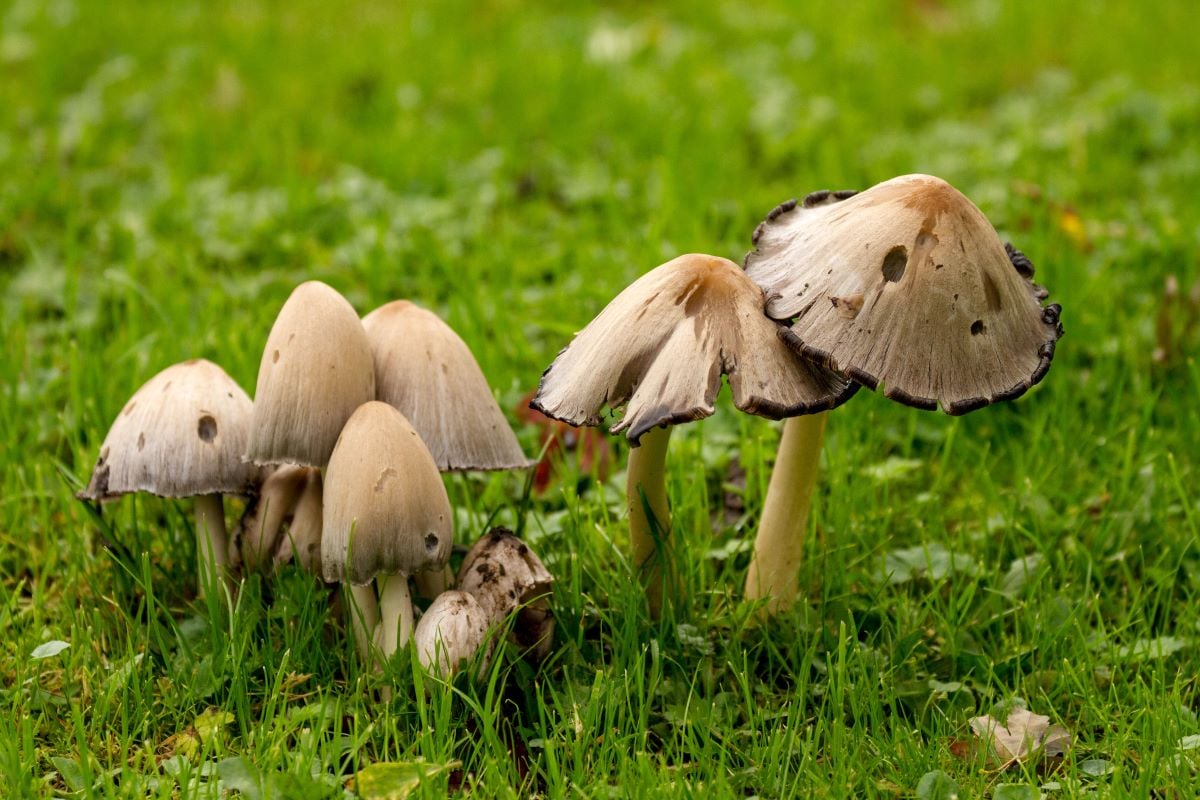
Photo: Michael Palmer/Wikimedia Commons
Picking the common inkcap is a "classic mistake" made by people looking for Shaggy Ink Caps or Stor parykhat.
The strange thing about this mushroom is that it is not even poisonous so long as you don't drink alcohol within 72 hours of eating it. If you do, it then stops your liver from properly breaking down alcohol, leading to acetaldehyde poisoning, with symptoms including hotness, a red face, a headache, sweating and breathing difficulties.
On the plus side, these symptoms, though severe, rarely extend to organ failure or death.
The Yellow Stainer (Karbol-champignon)
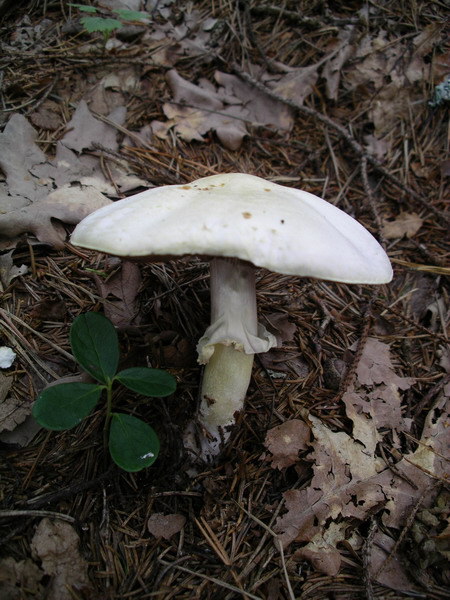
Photo: Deividas Makavičius/Public Domain
This field mushroom is very common in Denmark and easily mixed up with Horse Mushrooms, Field Mushrooms, or Wood Mushrooms.
It only contains low concentrations of the active poison, phenol, so is unlikely to cause much worse than a spate of unpleasant vomiting.
According to the cheery Marlow Renton from Wild Food in the UK, one way to tell it apart is by the way the cap and the base of the stem turn a bright chromium yellow when cut or bruised.
Horse mushrooms and wood mushroom can also stain a little bit yellow, however, meaning you may have to rely instead on your nose. Yellow Stainers have a distinct chemical smell (it's the phenol). Horse mushrooms and wood mushrooms, on the other hand, smell delicious (if sometimes slightly of aniseed).
Comments
See Also
If you are worried you or a child have eaten a poisonous mushroom, you can ring the poison information helpline on 82 12 12 12, which is operated by Bispebjerg Hospital in Copenhagen, but covers the whole of Denmark.
The hospital also issues a useful brochure in English on the five most poisonous mushrooms you might find in Denmark.
READ ALSO:
Here's a list of some of the mushrooms you should avoid, starting with the four species that might actually kill you.
The Killers
The Death Cap (Grøn fluesvamp)

Unlike the more obviously dangerous members of the Amanita family, such as the bright red and spotty Fly Agaric (see main pic), the Death Cap, or grøn fluesvamp, looks relatively innocuous. Don't let this fool you: it is one of the deadliest mushrooms in the world.
A giveaway is its strong ammonia-like, chemical odour. It tends to have a slightly sticky cap, which is about 15 centimetres wide, and sometimes a green or yellow tint.
Finally, it has crowded, completely white gills, so beginners can avoid eating one by following the simple rule of never picking or eating anything with white gills (although this does mean missing out on some tasty mushrooms).
Death caps can be confused with the Paddy Straw mushroom, or halmslidskivling (Volvariella volvacea) which are popular in Thailand, and as a result with Thai immigrants. The Paddy Straw doesn't grow in Denmark.
When young, it has an almost completely spherical, bowl-shaped cap, which means it can be confused with puffball mushrooms or røyksopp. If you think you have found a puffball, cut it in two. If it is solid inside, with no sign of a developing cap or gills, you can eat it.
If they have a green-tinted cap, they can be confused with the Green Brittlegill or Grønnkremle (Russula aeruginea), but the Green Brittlegill never has a ring around the stem, whereas Death Caps do. Also Green Brittlegills grow mostly under birch, whereas death caps grow under beech, oak, hazel, or on meadows.
The death in the name comes from the poison amatoxin, which damages or kills cells in the liver, kidneys, and heart, and in the lining of the gastrointestinal tract. The first symptoms – severe abdominal pain, vomiting, diarrhoea, thirst and decreased urine – start between four and 48 hours after ingestion, with liver failure and, sometimes, death coming not long afterwards.
Thankfully, though, this happens rarely, with the mushroom only causing a handful of fatalities a year in the whole of Europe and Russia, with an only slightly greater number of people having to have liver transplants.
According to the Swedish Poisons Information Centre, if you have eaten less than a sugar cube's worth, you probably do not need to go to hospital. Any more that that and you should.
The Destroying Angel (Hvid fluesvamp)

The Destroying Angel, or Hvid fluesvamp, also contains amatoxin and is every bit as deadly as the Death Cap.
As its cap is completely white, and doesn't have a green or yellow tint, it is harder to confuse with brittlegiills, but it can be confused with the Horse Mushroom (Ager-Champignon), the Dove-coloured Tricholoma (Silke-Ridderhat), or the St George's Mushroom (Vårmusseron).
Horse Mushrooms, however, have pink or brown gills, whereas the Destroying Angel's are completely white, and also, unlike the Angel, Horse Mushrooms have no cup-like structure (volva) at their base.
Similarly, Dove-coloured tricholomas and St George Mushrooms do not have a ring around the stem or a sack around the base.
As with the Death Cap, a sugar cube's worth is survivable, more than that, less so.
The Funeral Bell (Randbæltet hjelmhat)

The Funeral Bell contains slightly lower concentrations of poisonous amatoxins than the Death Cap and Destroying Angel, but serving your guests a mushroom stew made from a batch is still quite likely to leave at least some of them dead.
It's also more common in Norway and can be confused with the edible Sheathed Woodtuft, or Foranderlig Skælhat, which is usually larger, has protruding scales on its foot, and grows in clusters on the stumps of various deciduous trees.
The British forager John Wright, in his excellent River Cottage Handbook on mushrooms, recommends staying on the safe side by avoiding both. "The rule that little brown mushrooms should be avoided is a good one," he writes.
The Deadly Webcap (Puklet gift-slørhat)

Some people pick this common and really rather dangerous mushroom believing them to be Funnel Chanterelles or Tragt-kantareler. But they are so different that doing so requires utter carelessness.
The thing that makes falling foul of this mushroom particularly cruel is the length of time it takes for symptoms to appear: up to seventeen days, according to the River Cottage Handbook (although they can appear in two). Those affected suffer vomiting, diarrhoea and shivering, followed by kidney failure and most likely death (or if they're lucky, kidney transplants).
The related and similarly deadly Fool's Webcap, or Hvælvet gift-slørhat, is very rare in Denmark. It looks similar, but lacks an orange zigzag line around the stem.
The best way to avoid mistakenly eating either of them is to stick to the aforementioned rule of avoiding all little brown (or indeed orangey brown) mushrooms with brown gills.
Easy mistakes that might make you a bit ill
The Brown Roll-rim (Almindelig netbladhat)

The Brown Roll-rim is perhaps the poisonous mushroom that is most commonly eaten in Denmark, with some believing it to be edible so long as it is parboiled before cooking with the water then thrown away.
According to John Wright, it is indeed true that parboiling removes a toxin which causes short-term gastrointestinal upset. Unfortunately though, repeatedly eating them even when parboiled can cause the body to develop a severe allergy called "Paxillus syndrome" that involves a "catastrophic large-scale destruction of red blood cells". This is why the mushroom is the third most-common cause of fungal poisoning in Poland.
Some people confuse it with the Rufous Milkcap or Rødbrun Mælkehat, which you can recognise by the little wart-like bump in the centre of the cap.
The Sickener (Stor gift-skørhat)

Brittlegills, with their (yes) brittle white gills and stems that break with a snap, are easy to identify once you know how, and have the advantage that none of them will make you seriously ill. But the Sickener, or Stor gift-skørhat, is poisonous enough to bring on a spate of vomiting.
The easiest way to distinguish them from other red brittlegills is to nibble the corner of one and see if it tastes unpleasantly acrid or peppery, in which case it might be one and should be avoided.
If you don't want to even risk this, though, you could just make a rule of avoiding all red brittlegills.
Common Inkcap (Almindelig blækhat)

Picking the common inkcap is a "classic mistake" made by people looking for Shaggy Ink Caps or Stor parykhat.
The strange thing about this mushroom is that it is not even poisonous so long as you don't drink alcohol within 72 hours of eating it. If you do, it then stops your liver from properly breaking down alcohol, leading to acetaldehyde poisoning, with symptoms including hotness, a red face, a headache, sweating and breathing difficulties.
On the plus side, these symptoms, though severe, rarely extend to organ failure or death.
The Yellow Stainer (Karbol-champignon)

This field mushroom is very common in Denmark and easily mixed up with Horse Mushrooms, Field Mushrooms, or Wood Mushrooms.
It only contains low concentrations of the active poison, phenol, so is unlikely to cause much worse than a spate of unpleasant vomiting.
According to the cheery Marlow Renton from Wild Food in the UK, one way to tell it apart is by the way the cap and the base of the stem turn a bright chromium yellow when cut or bruised.
Horse mushrooms and wood mushroom can also stain a little bit yellow, however, meaning you may have to rely instead on your nose. Yellow Stainers have a distinct chemical smell (it's the phenol). Horse mushrooms and wood mushrooms, on the other hand, smell delicious (if sometimes slightly of aniseed).
Join the conversation in our comments section below. Share your own views and experience and if you have a question or suggestion for our journalists then email us at [email protected].
Please keep comments civil, constructive and on topic – and make sure to read our terms of use before getting involved.
Please log in here to leave a comment.